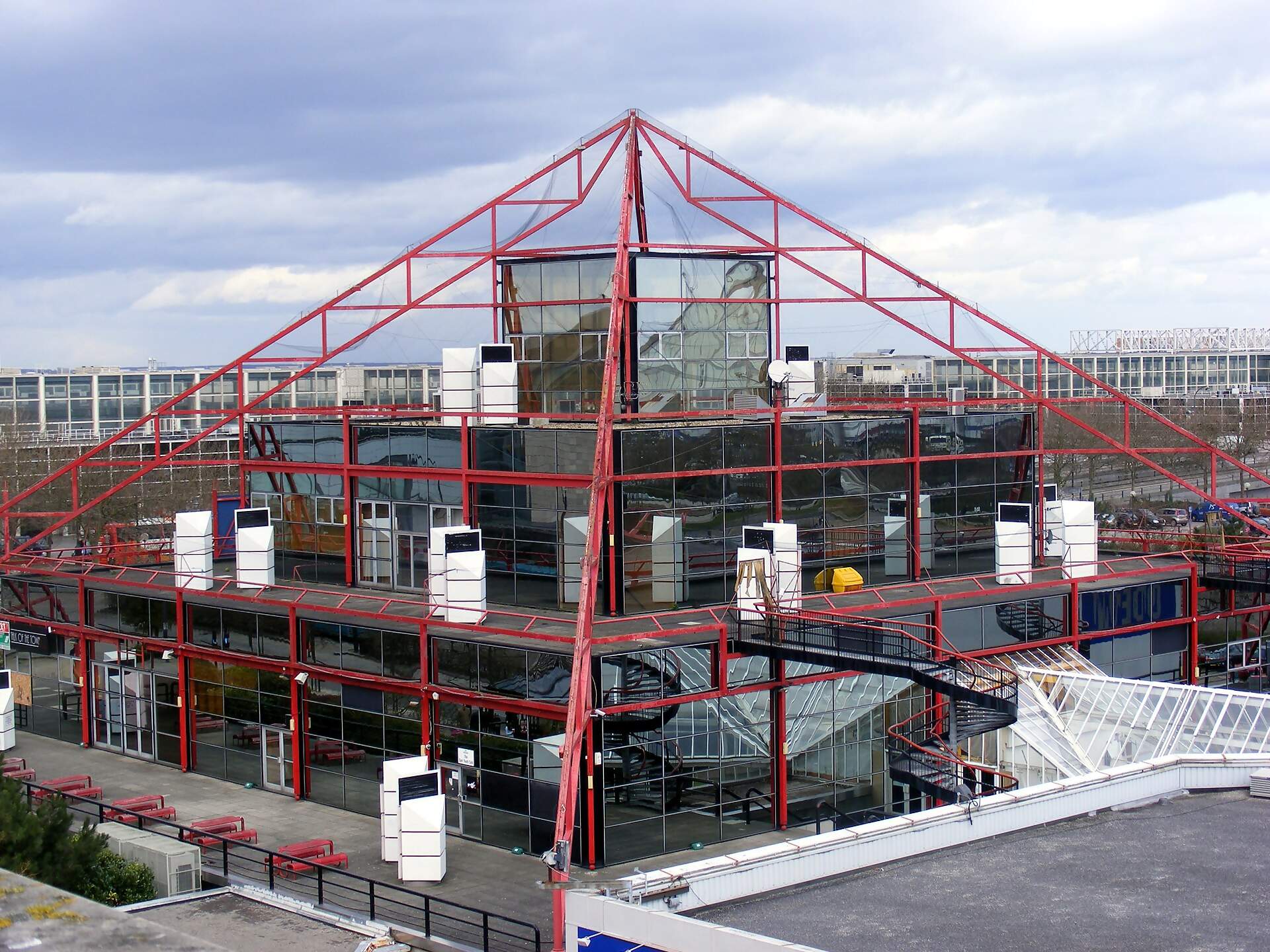
The Point in Milton Keynes was the UK’s multiplex cinema – but now it’s set to be demolished. Here’s why it’s an important piece of British cinema history:
I didn’t grow up in a place, I grew up in a punchline. When Milton Keynes trends on social media, it typically means there’s been a large event there, and visiting wits are taking the opportunity to demonstrate their originality and insight by dunking on the city as ‘soulless’ and/or ‘devoid of history and culture’. Ask a British person what they associate with Milton Keynes, chances are they’ll answer ‘roundabouts’ and ‘concrete cows’; they probably won’t say ‘cinema’.
That Milton Keynes’s Central Railway Station once doubled for the United Nations Building (in Sidney J Furie’s Superman IV: The Quest For Peace – Christopher Reeve’s last turn in the cape) is a tasty pub quiz nugget. But the city has a much better claim as a significant location in UK film history than a disappointing superhero sequel.
The Point, a ten-screen cinema a minute’s walk from the Milton Keynes shopping centre, was the brainchild of Bass Leisure and American Multi-Cinema Incorporated. When it opened its doors in November 1985, it ushered in a new era in UK cinema-going: the age of the multiplex.
Impact
In its first year, The Point saw over a million admissions, smashing the owners’ goal of 760,000. This figure was more than any cinema in the UK in the previous 15 years. The model caught on, and multiplexes sprouted up around the country.
The previous year, 1984, had been the worst for British cinema ticket sales since records began, but in the decade following, attendance numbers doubled and continued to rise until the Covid-19 pandemic. This came at a cost, however, as many traditional cinemas couldn’t compete and were forced to close.
Though The Point remained popular throughout the 1990s, the opening of a 16-screen cinema in the Xscape complex nearby in the early 2000s spelled trouble for the groundbreaking venue. It changed hands several times, including a brief period where EasyJet owner Stelios Haji-Ioannou tried unsuccessfully to apply an early booking model to film-going.
The Point struggled on for a few more years before closing in 2015, with Kingsman: The Secret Service being the last film screened there. It’s now slated for demolition, to be replaced by a block of flats and more shops. With its boxy ziggurat shape and mirrored surfaces like Miami Vice sunglasses, The Point screams 1980s. In its heyday, it was illuminated by red neon lights, which made it resemble a glowing sci-fi pyramid. It was a bold look, certainly not to everyone’s taste.
Its detractors apparently include Historic England, the organisation tasked with “championing historic places and helping people to understand, value and care for them.”

Overlooked
As a building over 30 years old, The Point should be eligible for protected status. Disappointingly, the public body exempted it, citing a “lack of architectural merit.” Clearly, The Point’s significance goes some way beyond its distinctive appearance, however; Richard Gray of the Cinema Theatre Association says, “As Britain’s first American-style multiplex, it’s a building of huge historical and architectural importance.”
The end?
Whether you’ve seen the classic Cinema Paradiso or not, you’ll undoubtedly know that it’s a love-letter to movies, the places we see them, and who we see them with. I watched it for the first time relatively recently, and it got me thinking about how gutted I’d be if my beloved old cinema disappeared. Trips there nurtured my love of film. It’s where I saw Peter Jackson’s Lord Of The Rings trilogy, It’s A Wonderful Life, and one of my favourite films, Withnail And I. Incidentally, several scenes from the latter were shot in Stony Stratford, just up the road from The Point.
I’m clearly not alone in my fond memories. Petitions to save the building – such as this one at change.org – have received thousands of signatures to date. Milton Keynes has a lively film culture that The Point no doubt played a role in fostering. This includes MK Horror Club, which organises regular screenings of classics of the genre at the Sky Room Cinema in Milton Keynes Gallery.
Cinema was the pre-eminent art form of the 20th century. It brought excitement, laughter, tears, romance, as well as escapism and comfort in tough times, and it still does. The Point symbolises the life-enhancing power of this global phenomenon.
Making a case
The Point is also emblematic of Milton Keynes, both confirming and defying outsiders’ conceptions of the place. Arguably, it represents homogenisation, profit and scale over soul, but it also embodies bold ambition, a willingness to apply innovative ideas from elsewhere to a UK context, and the revival of film-going as a sociable, shared experience.
There’s also a compelling environmental argument for renovation and reuse of existing buildings rather than demolition. A report by the Chartered Institute of Environmental Health released in November 2022 revealed that the construction industry was responsible for 18 percent of UK large particle pollution.
I understand the need for new homes. I certainly don’t want to be stuck in rented accommodation for the rest of my life. But they shouldn’t come at the cost of buildings that add character and distinctiveness to a place, especially when that place is often derided as lacking those specific and desirable qualities. If you believe UK cinema history is worth preserving, sign and share the petition. And if you’re fortunate enough to have a cinema with an interesting history near you, please don’t take it for granted.
Lead image credit: stone40 – wikimedia.org. A version of this article originally appeared in issue 46 of Film Stories magazine.







